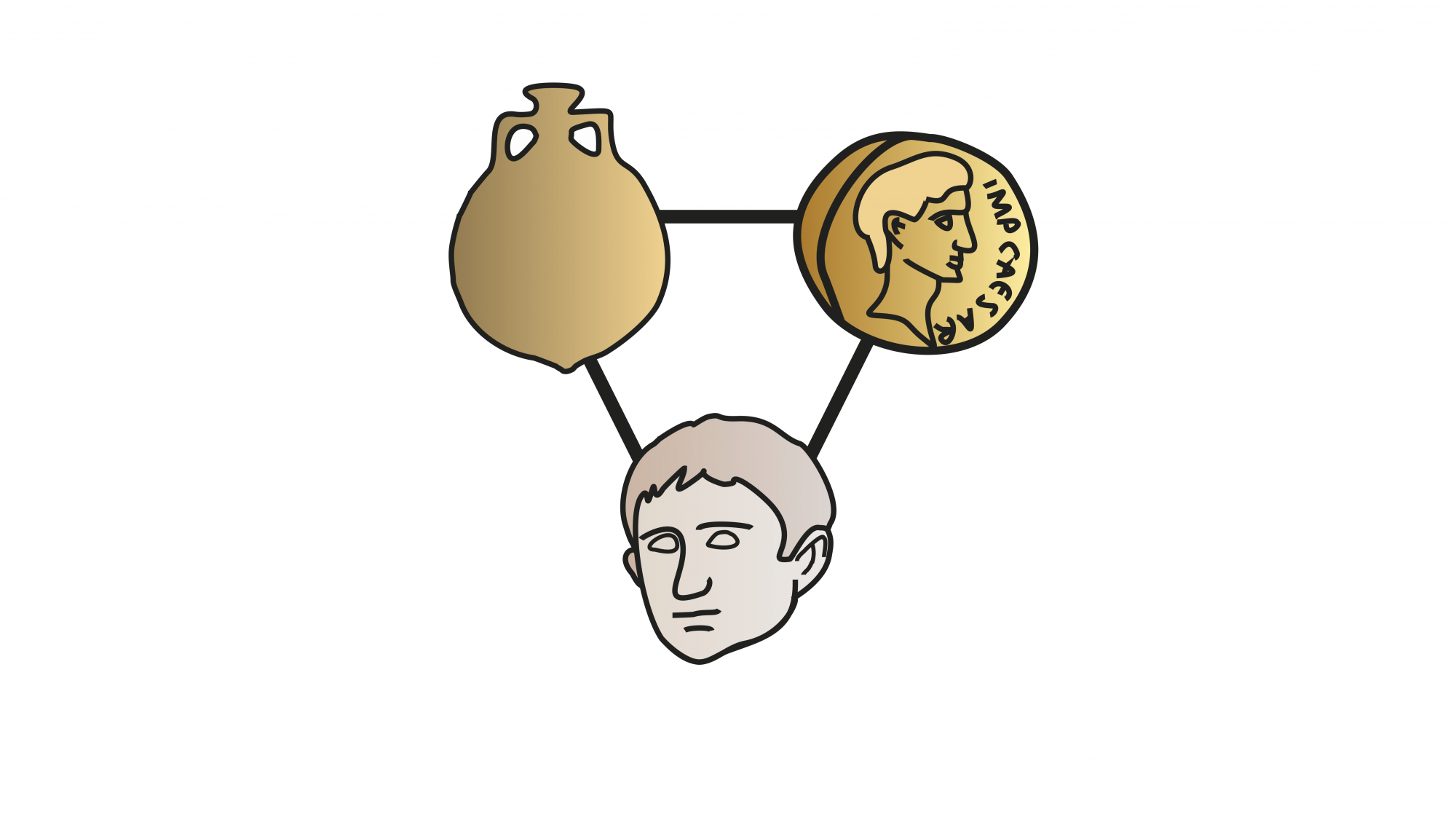Published as:
Brughmans, T. & A. Pecci. 2020. An inconvenient truth. Evaluating the impact of amphora reuse through computational simulation modelling, in C. Duckworth & A. Wilson (ed.) Recycling and reuse in the Roman economy. Oxford studies on the Roman economy: 191–234. Oxford: Oxford University Press. [PDF]
In short
- What is the impact of different processes and degrees of reusing amphorae containing oil, wine or fish on archaeologists’ ability to interpret amphorae distributions as distributions of foodstuffs?
- Aim: Study the problematics surrounding the main archaeological data type used as evidence for Roman trade flows.
- Method: simulation of the impact on amphorae distributions of reuse processes

A bit longer
Amphora reuse is an inconvenient truth: the topic has received little research attention in Roman studies, even though it likely happened and potentially on a huge scale as suggested among other contexts by the Grado shipwreck (Auriemma 2000). But what was the effect of amphorae reuse at different times and places in the past? What data and methods can Roman archaeologists use to evaluate this effect? How does the phenomenon impact our ability to interpret Roman amphora distributions as proxy evidence for the distribution of foodstuffs?
Opinions differ about these questions and are firmly rooted in assumptions about the degree of single and multiple use. There is a tendency among Roman archaeologists to assume an amphora type is linked to a particular foodstuff for single use, which for some types is a more acceptable assumption than for others. For example, Dressel 20 amphorae are commonly linked to Baetican olive oil and Campanian amphorae of Dressel 1 and 2-4 are linked to Campanian wine. This is not an idiosyncrasy of Roman archaeology but rather a common assumption in the archaeology of transport vessels. For example, research by Foley and colleagues (2012, 391) demonstrates that in as much as 95% of published research of Greek amphorae of the 5th to 3rd centuries BC a direct link between a foodstuff and an amphora type is assumed. However, Lawall (2011, 23-24) suggests those working in the Eastern Mediterranean before the 1st c. BC commonly assume amphorae are multiple reuse containers, where the same type could have packaged different types of foodstuffs. A further assumption is commonly made about the probability that amphorae of certain types are reused for either the same or a different content. Most striking is the case of Dressel 20 amphorae where Monte Testaccio in Rome, the huge artificial mound of mostly Dressel 20 sherds, offers evidence that at least in this context the amphora type was not usually reused and had a particular prime-use content of olive oil.
These sets of assumptions describe extreme scenarios: amphorae of a specific typology are either related to a single type of content or not, and they are either deposited after prime-use or they could be reused. Crucially, these extreme scenarios have important implications for our ability to use amphora type distributions to understand foodstuff consumption. Assuming single use implies the amphora type distribution provides the possibility of studying the consumption patterns of foodstuff products, whereas if reuse possibility is assumed combined with the possibility of multiple use for different contents then it is nearly impossible to obtain an overview of foodstuff consumption by using amphorae distributions as proxy evidence without any additional evidence or approaches. Reality no doubt lay somewhere in between these two extremes and necessarily was context-location- and time-specific (Abdelhamid 2013). A wide range of data types has been suggested that would allow for the identification of reuse in selected contexts. But such information is rare and generalisation from those well-documented cases is problematic given the complexity of the factors involved in reuse (Abdelhamid 2013).
What is needed is an approach that succeeds in creating theoretical predictions of amphora reuse in different spatiotemporal contexts that can be compared in selected cases with different types of empirical evidence of amphora reuse, in evaluating the probability and proportion of reuse, and in refining such probabilities with the availability of new empirical evidence. In this study we present computational simulation modelling as an approach that fulfils this need. The approach enables the simulation of expected amphora and foodstuff distributions in experimental settings that can represent different spatiotemporal contexts or amphora distribution theories. Such simulated expected amphora distribution patterns can be compared with empirically observed amphora distributions, the impact of reuse in simulations can be compared with selected evidence types of amphora reuse, allowing for the simulated distribution patterns of foodstuffs calibrated by processes of amphora reuse to be interpreted. It can therefore be used to explore the effects of both the extreme scenarios of single-use and common reuse of amphora types, as well as the grey zone in between: the combination of variable degrees of single or multiple amphora use. We argue that the in-depth analysis of a variety of evidence types from selected contexts can be used in combination with this approach to evaluate the probability of theoretical scenarios, and that large-scale and systematic residue analysis in particular will be crucial in achieving a better understanding of the phenomenon.
Acknowledgements
This chapter was written as part of an Early Career Fellowship (ECF-2016-197) awarded by the Leverhulme Trust to Tom Brughmans. This paper is part of the activities of the Ramon y Cajal contract (RYC 2013-13369) of Alessandra Pecci, founded by the Spanish MINECO, the ERAAUB, Consolidated Group (2017 SGR1043) and the ongoing I+D project HAR2017-84242-P of the Programa Estatal deFomento a la investigación científica y técnica de exelencia of the Spanish MINECO (2018–2020).
